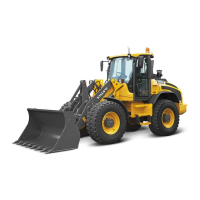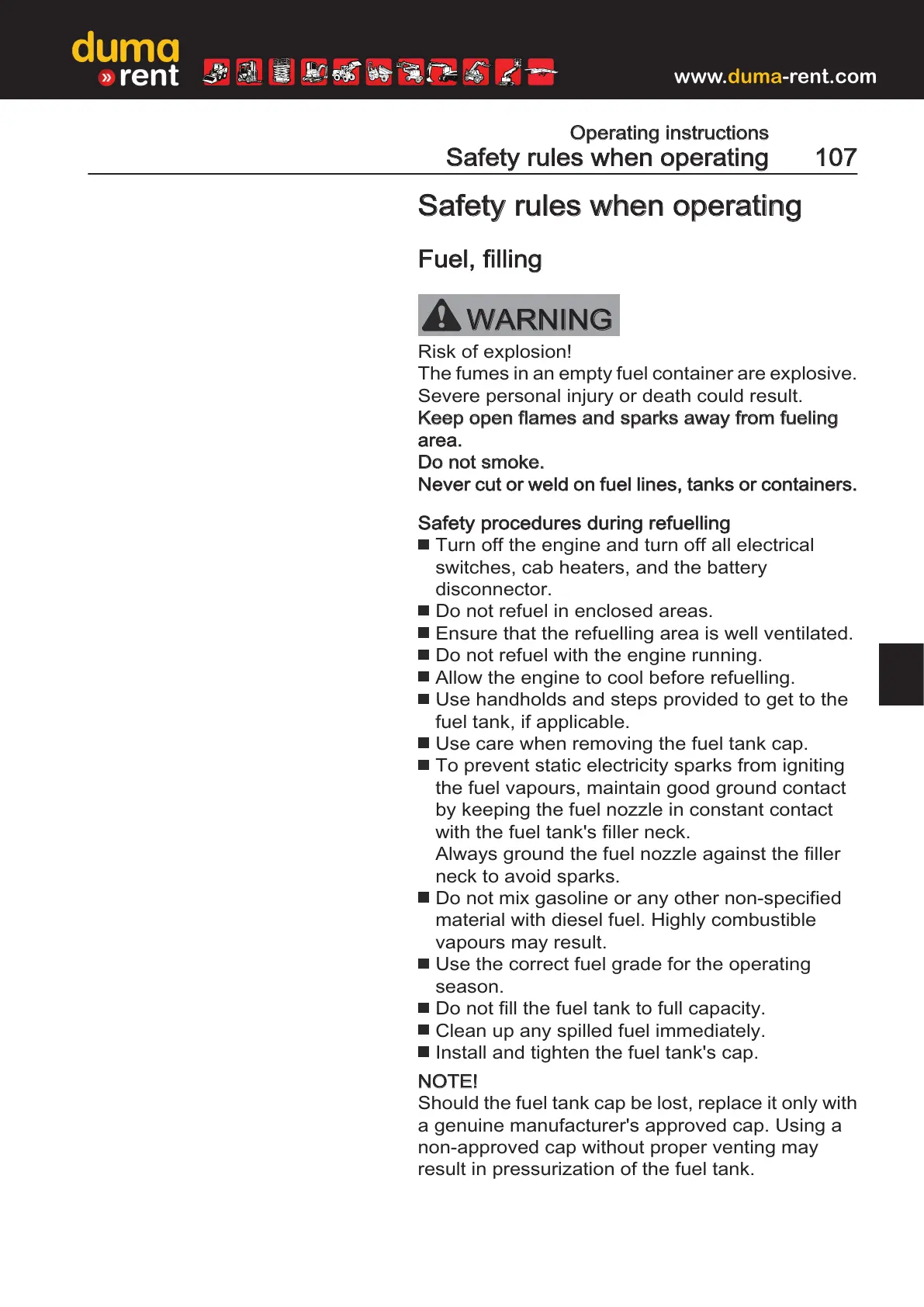Risk of explosion!
The fumes in an empty fuel container are explosive.
Severe personal injury or death could result.
Keep open flames and sparks away from fueling
Turn off the engine and turn off all electrical
switches, cab heaters, and the battery
disconnector.
Do not refuel in enclosed areas.
Ensure that the refuelling area is well ventilated.
Do not refuel with the engine running.
Allow the engine to cool before refuelling.
Use handholds and steps provided to get to the
fuel tank, if applicable.
Use care when removing the fuel tank cap.
To prevent static electricity sparks from igniting
the fuel vapours, maintain good ground contact
by keeping the fuel nozzle in constant contact
with the fuel tank's filler neck.
Always ground the fuel nozzle against the filler
neck to avoid sparks.
Do not mix gasoline or any other non-specified
material with diesel fuel. Highly combustible
vapours may result.
Use the correct fuel grade for the operating
season.
Do not fill the fuel tank to full capacity.
Clean up any spilled fuel immediately.
Install and tighten the fuel tank's cap.
NOTE!
Should the fuel tank cap be lost, replace it only with
a genuine manufacturer's approved cap. Using a
non-approved cap without proper venting may
result in pressurization of the fuel tank.
Operating instructions

